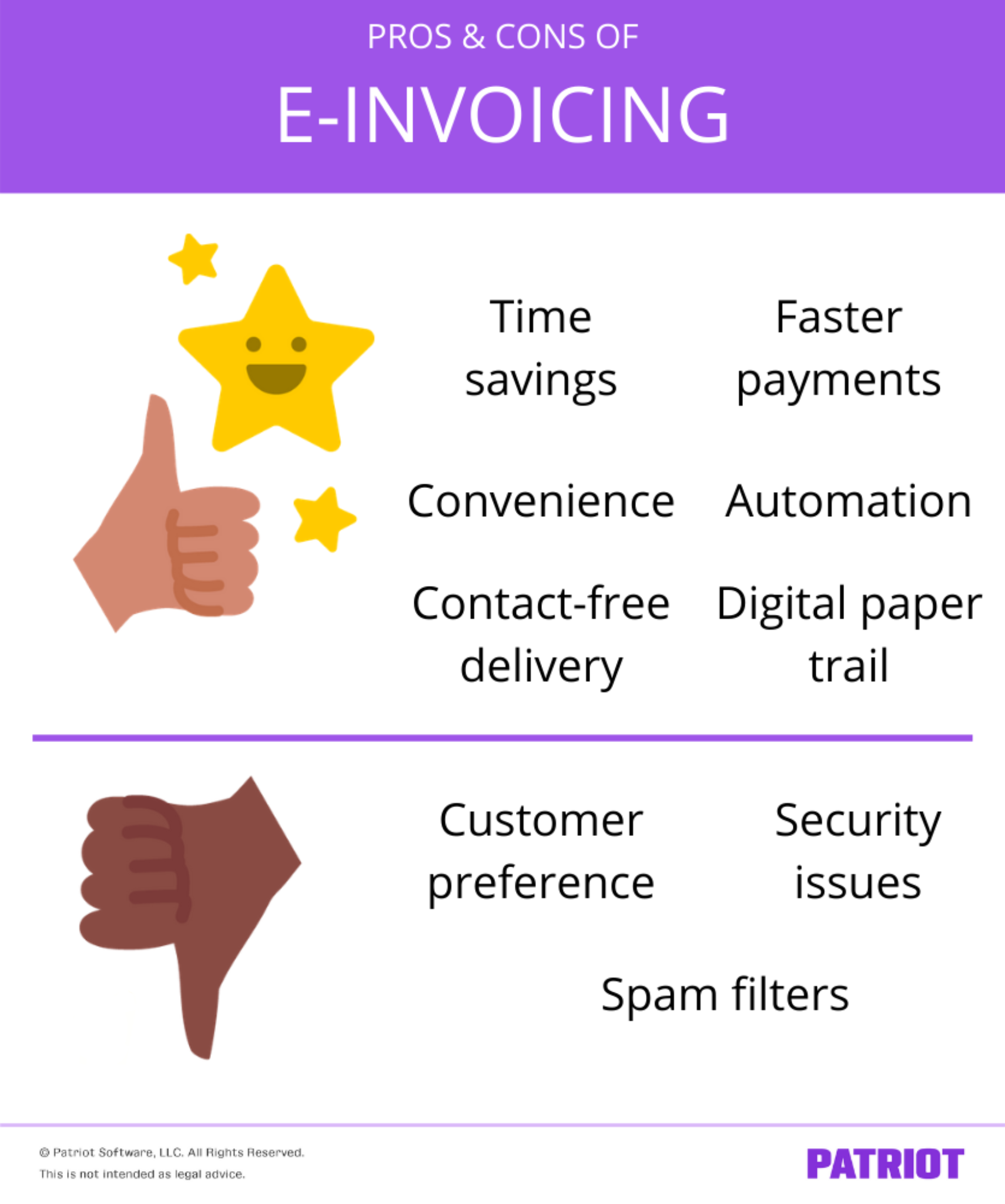Does your invoicing process look a little something like this? Print, fold, stick paper in envelope, seal, add stamp, add addresses, mail, and repeat. If you’re cringing at the thought of having to mail off one more invoice to your customers, you might consider e-invoicing.
What is e-invoicing?
Electronic invoicing, also called e-invoicing or digital invoicing, is the process of billing a customer online rather than via mail. The customer receives their invoice either via email or a secure portal (e.g., an online account). Generally, businesses that use e-invoicing also give customers the ability to pay their bill online.
If you’re thinking about e-invoicing customers, keep in mind that you need to include the same information you would on a paper invoice. Like traditional paper invoices, e-invoices include key information about a customer’s purchase, including:
- Date
- Customer and seller information
- Purchased goods or services
- Amount due
- Payment due date
- Acceptable payment methods
- Early payment discount (if applicable)
- Invoice number
You might ask customers to opt into e-invoicing by signing up or acknowledging that they agree to e-invoicing. You may even add an incentive to customers who sign up (e.g., $X off their next invoice). Before sending digital invoices to customers, ensure they have access to the email address or the secure portal to avoid delays.
Digital invoicing: Pros and cons
So, should you switch to electronic invoicing or include it in your invoicing process? Before making that decision, consider the pros and cons of e-invoicing.

Here are some of the advantages of electronic invoicing:
- Convenience: You don’t have to worry about things like ink, paper, envelopes, or stamps when you bill customers. Instead, simply generate and send the invoice electronically.
- Automation: Depending on how you pursue e-invoicing (e.g., accounting software), you might be able to automate the process for customers who have recurring invoices. That way, you don’t have to worry about remembering to create and send the bill.
- Time savings: That whole print, mail, repeat process? Gone. E-invoicing can save you the necessary time to mail invoices, especially if you use automation.
- Faster payments: You may be able to speed up customer payments (and thus have a healthier cash flow) through electronic invoicing. Customers might be more apt to pay immediately upon receiving a digital invoice, particularly if they can pay online.
- Digital paper trail: Sending customers electronic invoices provides a built-in (paperless) paper trail so you can better track records.
- Contact-free delivery: Your customers receive their bills without having to interact with any people or paper.
Before you start sending customers electronic invoices, consider the following:
- Security issues: Some customers may not have secure email addresses, which may lead to security issues.
- Spam filters: Depending on your customers’ email settings, your electronic invoice might land straight in their spam folder.
- Customer preference: Not all of your customers will want to receive electronic invoices. Some may prefer hard copies. Again, communicate with customers before invoicing them electronically.
How to create and send electronic invoices
Do you think sending customers their bills electronically is the way to go for your business? If so, understand how to create and send e-invoices to customers.
You can create electronic invoices using:
- Templates
- Accounting software
Once you generate your invoice online, you can send it to customers via email or through a secure portal, like their online account.
If you use accounting software, you may be able to further streamline the process by:
- Setting up recurring invoices
- Automatically sending out payment reminders
- Choosing from invoice templates
- Tracking unpaid invoices (and paid invoices) in the software
Want to simplify the e-invoicing process? Patriot’s small business accounting software makes it easy to send customizable e-invoices to customers, accept credit card payments, and so much more. Start your free trial now!
This is not intended as legal advice; for more information, please click here.
Leave a Reply